I threw a picnic in our garden the other day. We were busy with all…
The secret of the Lavenham Blue
At Easter, we visited Suffolk and Norfolk, whilst we did not see everything we wanted, we did manage to see a lot. Lavenham was on our list because we both have seen it on TV several times and wanted to visit this medieval village which has many timbered houses. As we walked in the village the houses amazed us and also put a smile on our face.
The history of Lavenham
Lavenham’s history goes back to Saxon times, however it got its fame in the Tudor times due to its woollen trade. Apparently, Lavenham was the 14th wealthiest town and paid more tax than York and Lincoln – where trade and agriculture was significant. Edward III encouraged the English weaving industry and Lavenham started to flourish. The number of timber framed houses increased and the more wealthy a merchant was, the more timbers were used for his house. Some merchants were fined by Henry VII for showing off with their wealth. In the 16th century the industry started to decline as Dutch immigrants started to produce a lighter, cheaper and more fashionable cloth. Because of this, the village’s wealth declined, the houses were not maintained an as a result they were not rebuilt in later architectural styles. Basically this is the reason why there are so many Tudor buildings in Lavenham. We are pleased about that today, but I am pretty sure people were not thrilled living in an old house back in time.
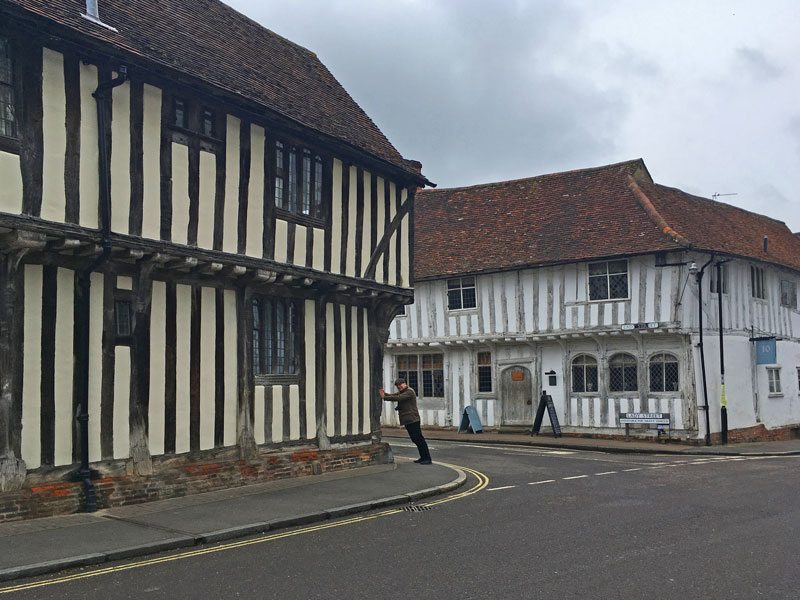
The Guildhall
One of the most beautiful buildings in Lavenham is the Guildhall built in 1529. This was neither a town hall nor a building for a guild, in fact it was the Guild of Corpus Christi, a Catholic organization which subject to a yearly fee, looked after people in sickness or in case of bankruptcy. When we stood in front of the building I asked Bill whether, he wanted to go in and look around. “No, not really”, he said so I took his hand and we went in saying we are members of the National Trust who own the building so we can visit everything for free.

When we visit a place like this we always try to talk to the guides as normally they know a lot. When I say a lot, I do mean a LOT. (Of course not all of them, but generally we have a quite good experience.) So good to know, these guides are not in the room to watch you whether you touch something you should not, but to tell you interesting stories.
The Lavenham Blue
One of the guides kindly explained the history of the wool trade and the famous cloth, the Lavenham Blue. You would normally think if this cloth was produced in Lavenham, local material was used, but it was not the case. Wool came from Lincolnshire, Northamptonshire and Cambridgeshire and was dyed before weaving. (Indeed, we hardly saw sheep in Suffolk, mainly pigs. Since I know Suffolk is the biggest pig farming county in the UK.)
In order to get a blue colour, they used a plant, called woad. (The same plant was used for dying cloths in Hungary, the method was called “kékfestés”.) But the material which was extracted from the plant was a pigment and not a dye which meant, it had to be dissolved first. This is the process where pee was used: to get the blue colour from the woad and get a lighter blue colour, the wool and the leaves of the woad was soaked in urine. Then it was dried and the wool gradually turned to blue on the air. I do not think it was pleasant to work with that wool then because only the finished product, the cloth was later washed to get rid of the unpleasant smell. The cloth was pinned on wooden frames to dry and stretch it. The Lavenham Blue was a very delicate product and was exported as far as Russia or the Middle East.
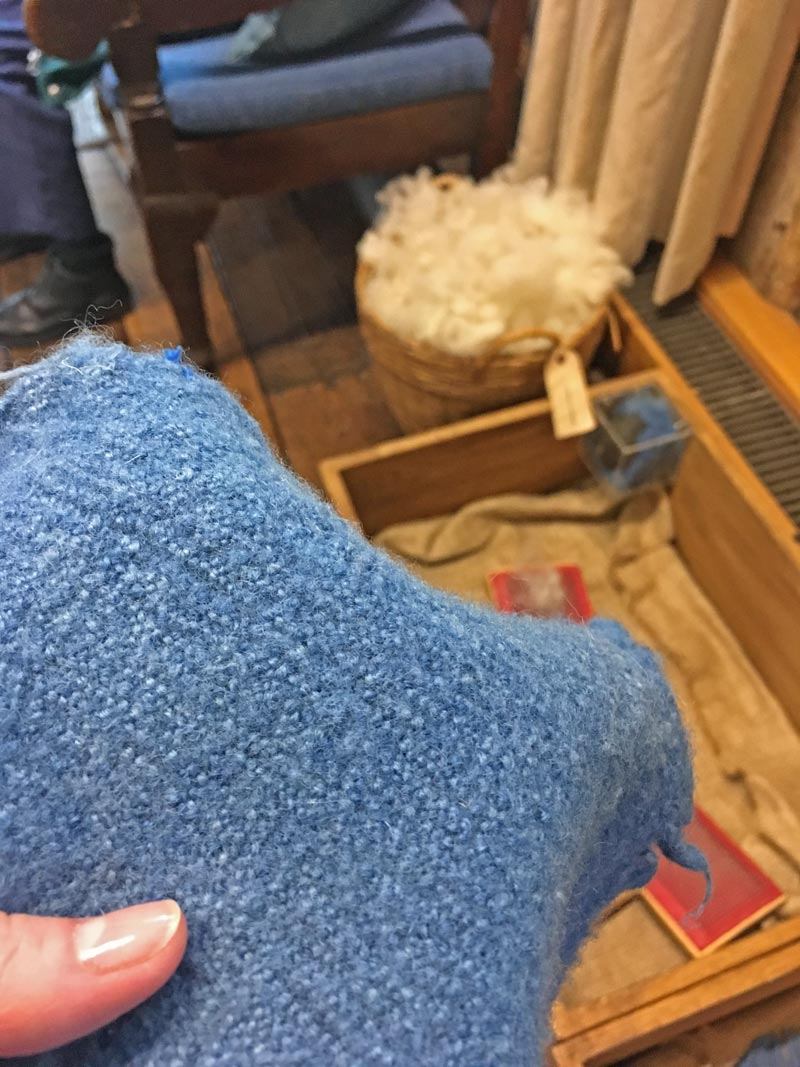
it is quite soft, I was surprised and loved the colour.

The Guildhall, later functioned as a prison, workhouse, pub and a chapel after the decline of the village and the guild (due to the spread of the Church of England), which did not surprise us. However, it is most interesting that during Victorian times the timber was painted with oil paints and tar to get a more distinctive look. Unfortunately, this was not a clever idea as the timber could not “breath”. Fortunately, the building is now looked after properly and is lime-washed every five years allowing the timber and the walls to breath.
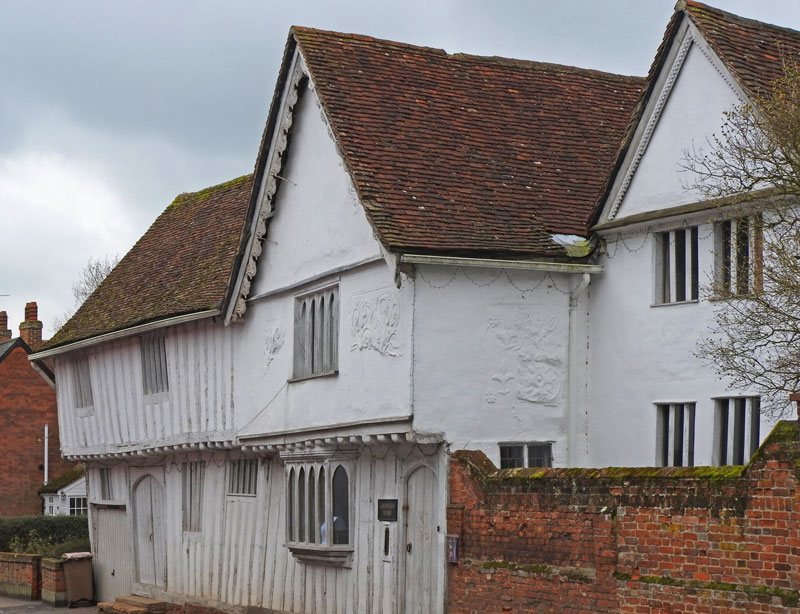
The Market Cross was built in 1502 and was a place of bear baiting. I asked the guide whether there was a cross on top of the column originally because it was built in Catholic times. As we know, later the Protestants removed crosses from villages and put sundials and other ornaments on top instead. He did not know anything about it, unfortunately. Therefore I presume this is the original design.
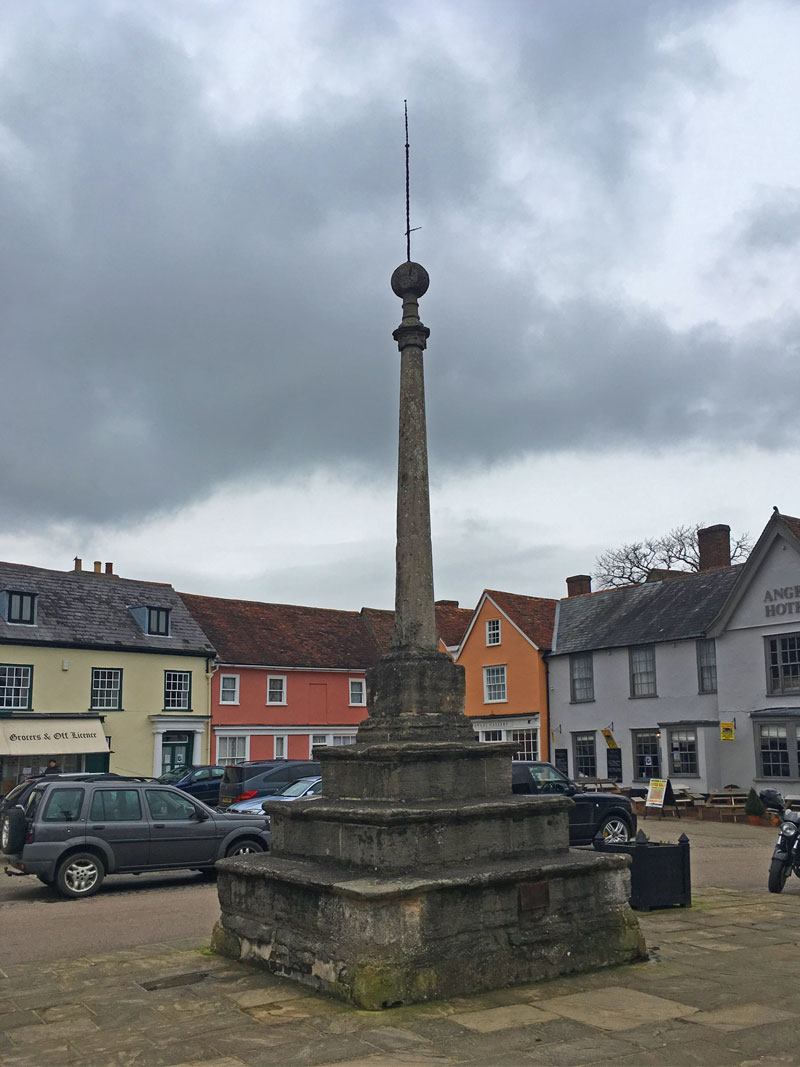
Little Hall is one of the oldest houses in Lavenham built in 1390. (If the builders only knew the house they built would still stand after 700 years…)
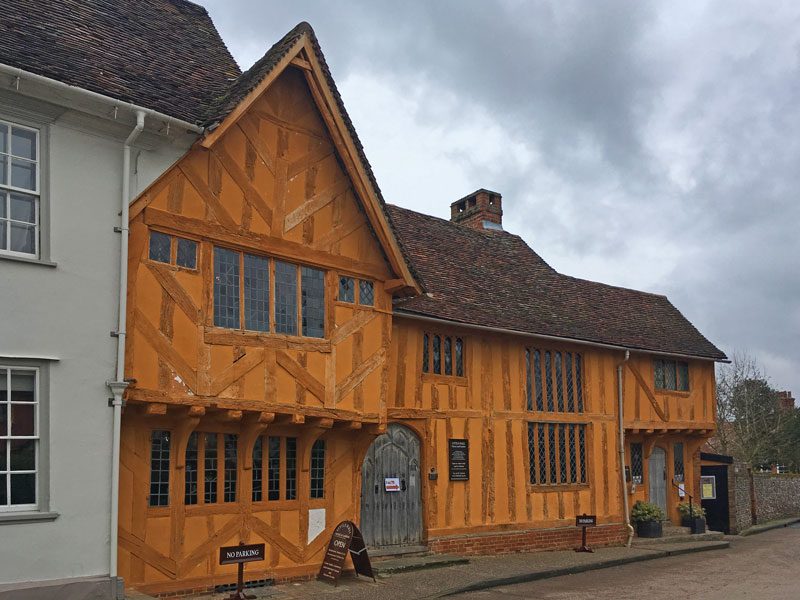
Other interesting facts about Lavenham:
- Electric cables were laid under ground to preserve Lavenham’s Tudor look even more.
- Harry Potter and the Death Hallows were filmed here. (No matter how well I prepare for a trip, I always miss something to take a photo of…)
~
Lavenham is a beautifully preserved village which is almost like an open air museum of the Tudor period. It shows the skill and artistry of the houses which have stood over 700 years and are still lived in today. The story about the Lavenham Blue is definitely something you will always remember and makes this village even more interesting so that it should appear on your bucket list.




Comments (0)